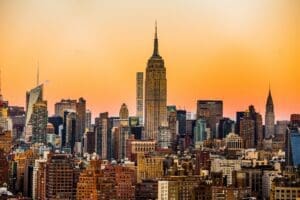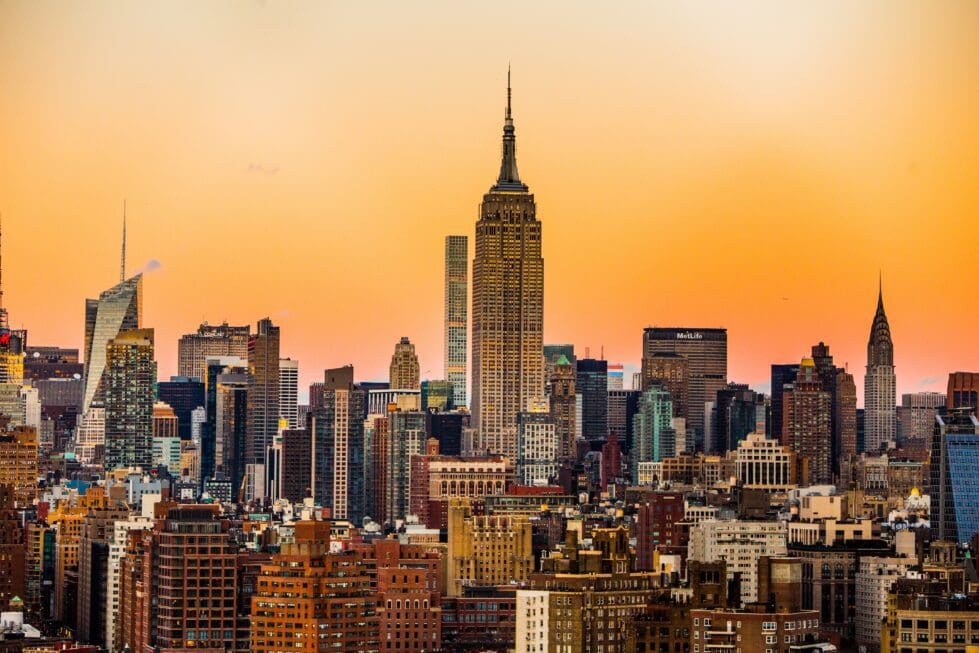
Wildfires caused smoke to blow across several states on the East Coast. Photo by Michael Discenza/Unsplash.
A conservative institute wants Delaware to move to make sure that it’s not tagged by the feds with several bad air days because of last week’s smoky, hazy days caused by wildfires in Canada.
David Stevenson, director of the Center for Energy & Environment at the Caesar Rodney Institute, has urged Delaware’s Department of National Resources & Environmental Control to declare it an exceptional event.
An exceptional event involves DNREC asking the EPA to exclude certain days that far exceed the federal limit for air pollution because the event was both not reasonably controllable and not reasonably preventable.
Angela Marconi, director of the DNREC Division of Air Quality, said that the agency was considering that option, but wasn’t sure if it would be declared an exceptional event.
“Preparing an exceptional event request is a laborious task, so it’s not as simple as just saying, ‘Hey, EPA, we think this was an exceptional event,’” Marconi said. “It does require putting the data together in a pretty significant package, but we are looking into that.”
Stevenson counters that it may suit DNREC to allow the pollution counts to stand so it can continue to issue regulations that may prevent new businesses from opening.
Stevenson and Marconi describe the amount of pollution using the federal jargon “attainment,” which means that an area is at or below the Environmental Protection Agency’s allowable limit.
That number is based on a three year average for six different types of emissions: ozone, particulate matter, carbon monoxide, sulfur dioxide, lead, and nitrogen dioxide.
For ozone, that limit is 0.070 parts per million, for carbon monoxide, that limit is nine parts per million, for sulfur dioxide, that limit is 75 parts per billion, for lead, that limit is 0.15 micrograms per cubic meter, for particulate matter, that limit is between nine and 10 micrograms per cubic meter, and for nitrogen dioxide, that limit is 53 parts per billion.
By not declaring an exceptional event, Stevenson said Delaware risks being out of attainment which in turn makes it harder for businesses to operate in the state
“There is a huge economic development advantage to being in attainment with the air quality standards…What happens is, if you’re a new business, starting a new product that has emissions or you’re an existing business that wants to grow your business, you have to get a permit from DNREC to be able to emit, say. volatile organic compounds,” Stevenson said.
Related Story: DNREC Issues Air Quality Alert
Due to the smoke, air quality readings in Delaware spiked, with levels of fine particulate matter reaching 229 on June 7 in Wilmington. That put it in the very unhealthy category, after having been at 140 the day before.
The number for particulate matter corresponds to how high on the air quality index the reading is, measuring from zero to 500, with readings of 300 being classified as hazardous and affecting everyone, while readings between 101 and 150 is only unhealthy to sensitive groups,such as children, people 65 and older and those with asthma or other medical issues.
On June 7, Wilmington recorded 178 micrograms per cubic meter of particulate matter.
That level in Wilmington fell slightly on June 8 to 199, or 148.9 micrograms per cubic meter, and by June 9 was down to 77, or 24.4 micrograms per cubic meter.
Marconi said that all counties in Delaware are in attainment for particulate matter, but New Castle County is not in attainment for ozone, meaning permits aren’t approved for companies that would involve putting more ozone in the atmosphere.
“So in terms of permitting, our previous non attainment status has set a lower permitting threshold for major sources in both New Castle and Kent counties,” Marconi said. “And those are maintained as a way to ensure that we do not backslide.”
Stevenson said he doesn’t have much hope that DNREC will declare an exceptional event.
“Regulators regulate,” Stevenson said. “To regulate, you have to be out of attainment. First thing, I feel like DNREC doesn’t want to have attainment because then they wouldn’t have as much permitting control…to be able to write a regulation. The only way you can do it is if you have the justification that something’s out of whack. So the longer you can say it’s out of whack, the longer you have to make regulations.”
While some groups, like the Environmental Defense Fund, have shown links between the increase in the number and severity of wildfires and climate change, Stevenson said he doesn’t believe there is any connection. The EDF has been accused of funding and disseminating information that utilizes questionable science and economics, according to Wikipedia and other sources.
“There are wildfire seasons…wildfires all the time,” Stevenson said. “One of the things that has happened both in Canada and the US, they have been doing crappy forest fire management…If you look back over the last 100 years, there are actually fewer wildfires now than there were in the past.”
Marconi said climate change has had some impact on the amount of wildfires.
“Over the past decade, we’ve seen increased incidence of fires like this,” Marconi said. “And it definitely points to climate change, seeing more of these types of events happening.”
According to data from the federal National Interagency Fire Center, the number of wildfires and their severity in the U.S. have been roughly the same over the past 38 years.
In 1985, there were 82,591 forest fires that burned 2,896,147 acres, compared to 82,234 fires in 1995 burning 1,840,546 acres, 66,753 fires burning 8,689,389 acres in 2005, 68,151 fires burning 10,125,149 acres, and 68,988 fires burning 7,577,183 acres in 2022.
Stevenson cited a report from the Property and Environment Research Center, which says it is nonpartisan but is described as right wing by SourceWatch, said the main issue with wildfires is a lack of property forest management, though that report did mention that climate change has exacerbated the poor forest conditions.
Share this Post




